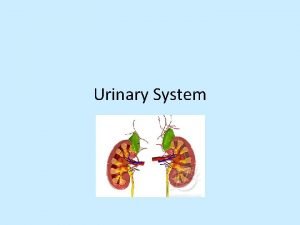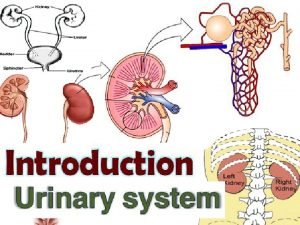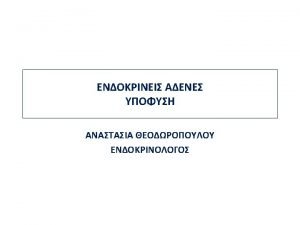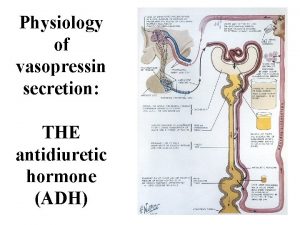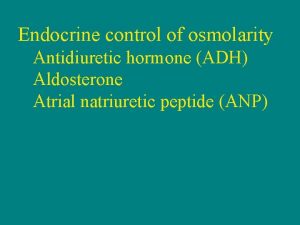Antidiuretic Hormone Diagram www assignmentpoint com Water content









- Slides: 9

Antidiuretic Hormone Diagram www. assignmentpoint. com

Water content of the blood HIGH Water content of the blood LOW Too much water drunk Too much salt or sweating Brain produces More ADH Brain produces Less ADH Water content of the blood normal Low volume of water reabsorbed by kidney High volume of water reabsorbed by kidney Urine output HIGH Urine output LOW (small volume of Concentrated urine) www. assignmentpoint. com (large volume of dilute urine)

All land animals need to conserve water. This is because the external environment is usually drier than the internal environment of the animal’s body. Thus, water will tend to diffuse away from the body. There is also a need to excrete waste products such as urea, which is dissolved in water. This creates a problem! In mammals, the kidneys are responsible for both excretion of urea and osmoregulation (the control of body fluid concentration). So, the kidney must balance the need to excrete with the need to conserve water, in other words it must produce a small volume of highly concentrated urine. www. assignmentpoint. com

• The operating unit of the kidney is called the nephron. • There about 1 million nephrons in each of the 2 kidneys. • Each nephron comprises 5 segments: • Glomerulus • Proximal (first) convoluted tubule • Loop of Henle • Distal (second) convoluted tubule • Collecting duct • The Loop of Henle allows mammals to produce urine which is more concentrated than body fluids…. . . www. assignmentpoint. com

Cortex Medulla Ureter The nephrons are packed into the kidney: the glomeruli and convoluted tubules in the cortex, the loops and collecting ducts extending into the medulla. All the collecting ducts eventually join up to form the ureter, emptying urine into the bladder www. assignmentpoint. com and away!

Cortex Water leaves - ion concentration in filtrate increases Medulla Chloride ions out (sodium follows) ion concentration in filtrate decreases Filtrate reaches maximum concentration www. assignmentpoint. com

Cortex Collecting duct • Several nephrons empty into one collecting duct. • The collecting duct passes through the progressively more concentrated medulla, losing water by osmosis. This water is reabsorbed by the capillaries. • This water is conserved, and a highly concentrated urine is produced. Medulla To ureter Water reabsorbed into vasa recta, urine becomes more concentrated www. assignmentpoint. com

Beaver Human The length of the loop of Henle is related to the environment that the animal lives in. A longer loop will conserve more water, so animals in drier environments have longer www. assignmentpoint. com loops. Desert Rat

Now test yourself (if the test doesn’t appear straight away, click on ‘Reload’) Be warned - this test requires you to understand everything that goes on in the nephron Not for the faint-hearted! www. assignmentpoint. com
